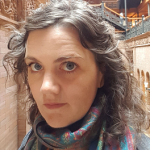Wednesday 10 April 2019
What is it: Geodata’s just used in the sciences, right? Think again! Geographic Information Systems (GIS) can be used to bring new perspectives on what it is to be human.
This short talk will look at how digital mapping techniques can be used to present historical maps, works of art and historical data in new and engaging ways. The talk will cover some basics about digital mapping (terminology, concepts) and consider what makes a good digital map. It will demonstrate some ‘off-the-shelf’ web-based tools and straightforward techniques that can be used to develop proof-of-concept maps: including geo-rectification (to create layers of historic and modern maps), how to map ‘messy’ historical data and what insights it can give us, why we might want to geo-locate digitised works of art, and how to use digital maps to tell stories.
Who is it for: Anyone interested in learning the basics of digital mapping from terminology and concepts to digital tools, understanding what makes a good map (especially for working with historical and cultural datasets and collections), and how to rustle up a map using web-based tools. No previous experience of mapping necessary.
Presenter: Katrina Grant
 Dr Katrina Grant is a lecturer in Digital Humanities at the Australian National University, with a specialisation in Art History. She has a special interest in the Digital Art History and the application of visualisation and mapping technologies to understand the history of landscapes and human understanding of the natural environment. She also dabbles in the history of performance and theatre technologies. She has worked across a range of projects using diverse digital methods, from mapping to 3D scanning of animal skulls, to the implementation of digital technologies in museums, and research on the history of gardens in early modern Europe.
Dr Katrina Grant is a lecturer in Digital Humanities at the Australian National University, with a specialisation in Art History. She has a special interest in the Digital Art History and the application of visualisation and mapping technologies to understand the history of landscapes and human understanding of the natural environment. She also dabbles in the history of performance and theatre technologies. She has worked across a range of projects using diverse digital methods, from mapping to 3D scanning of animal skulls, to the implementation of digital technologies in museums, and research on the history of gardens in early modern Europe.
Twitter @orientalhotel
Website https://researchers.anu.edu.au/researchers/grant-k
